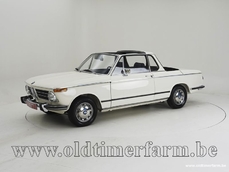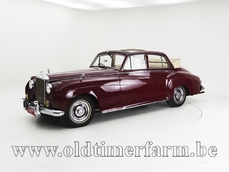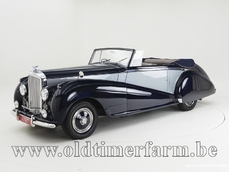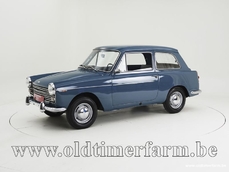Rover SD1 (2000/2300/2400/2600/3500/Vitesse) Vandenplas '86 1986
Allgemeine Beschreibung :
❗Lowered price from span class="pq6dq46d tbxw36s4 knj5qynh kvgmc6g5 ditlmg2l oygrvhab nvdbi5me sf5mxxl7 gl3lb2sf hhz5lgdu">img src="https://static.xx.fbcdn.net/images/emoji.php/v9/t33/1/16/2705.png" alt="✅" width="16" height="16" /> €12.500- €11.500 img src="https://static.xx.fbcdn.net/images/emoji.php/v9/t33/1/16/2705.png" alt="✅" width="16" height="16" /> In 1971, Rover, at that time a part of the British Leyland (BL) group, began developing a new car to replace both the Rover P6 and the Triumph 2000/2500. David Bache designed the car, inspired by the Ferrari Daytona and the Maserati Ghibli. The new car was designed with simplicity of manufacture in mind in contrast to the P6, the design of which was rather complicated in areas such as the De Dion-type rear suspension. The SD1 used a well-known live rear axle instead. This different approach was chosen because surveys showed that although the automotive press was impressed by sophisticated and revolutionary designs the general buying public was not unless the results were good. However, with the live rear axle came another retrograde step – the car was fitted with drum brakes at the rear. The first series was launched on its home market in June 1976, with the V8-engined Rover 3500: 2.3 L and 2.6 L sixes followed in November 1977, when the Rover P6 and Triumph 2000 were finally discontinued. The car was warmly received by the press and even received the Europeancar of the Year award in 1977. Between 1976 and 1981 there were some very minor updates to the car including new badging (front and rear) and chrome backed door mirrors - the traditional-style Rover Longship emblem returned for the 1981 model year, thus replacing the 'skeletal' version, although the latter continued to be used on the hubcaps, and indeed a variant of this Rover logo was later used as a hubcap emblem on both the later SD3 Rover 200 and Rover 800 models as late as 1989. The saw the introduction of the then range-topping V8-S model with no mechanical alterations, available in a rather bright metallic "Triton" green amongst others with either gold or silver-painted alloy wheels depending on the body color. Interior specification included air-conditioning, thick luxurious carpets, velour seats and a headlamp wash/wipe system. This now very rare model was replaced in late 1980 with the Vanden Plas (VDP) model, which came with a leather interior as standard Vanden Plas is the name of coachbuilders who produced bodies for specialist and up-market automobile manufacturers. Latterly the name became a top-end luxury model designation for cars from subsidiaries of British Leyland and the Rover Group. The business began in 1870 in Brussels, Belgium, initially making axles later producing horse-drawn carriages. It was founded by Guillaume van den Plas, a blacksmith, and his three sons, Antoine, Henri and Willy, who later set up a branch in Paris. In 1884 they moved from Brussels to Antwerp. With increased business they opened a branch in Brussels again in 1890. By 1900, they worked with De Dion Bouton, Berlier, Germain and Packard. By 1908 Carrosseire Van Den Plas had a workforce of 400 men producing 300 special bodies a year, and that soon increased to over 750. The French branch ceased production in 1934 while the Belgian business was active until 1949. The coachbuilder's name first appeared in the United Kingdom in 1906 when Métallurgique cars were imported with Carrosserie Van den Plas coachwork. The first Vanden Plas company in England was established by Warwick Wright (now Peugeot dealers) in 1913, building bodies under license from Carrosserie Van den Plas Belgium. In the 1930s the company supplied coachwork to such as Alvis, Bentley, Lagonda, Daimler, etc. The company also updated its production methods and took to making small batches of similar bodies. With the outbreak of war in 1939, coachbuilding stopped and the company returned to aircraft work, manufacturing the wooden framework for the de Havilland Mosquito, one of the most successful aircraft of the Second World War. With peace in 1945 the company looked to restart its old business when a new customer came along. austin wanted to market a chauffeur-driven version of its in-house-built large 4-litre Rolls-Royce-size A110 Sheerline luxury car and approached Vanden Plas. Vanden Plas became a subsidiary of the Austin Motor Company in 1946 and produced Austin's A120Princess model on the Austin Sheerline chassis. From 1958, this began to involve chassis assembly and Austin, now BMC, recognised Vanden Plas as a motor manufacturer in its own right by dropping Austin from the name and so enabled Nuffield dealers to sell the Princess. In 1960, the Princess became the Vanden Plas Princess. Austin was joined in BMC by Jaguar with its new subsidiary Daimler. Production of Princess limousines ended in 1968 when they were replaced with Daimler DS420 limousines (Jaguar had acquired Daimler in 1960) built by Vanden Plas on a lengthened Jaguar Mk X platform. The DS420 was produced at the Kingsbury Lane Vanden Plas factory until it closed in November 1979. The British Leyland overall holding company board decided in 1967 there were insufficient funds in the group advertising budget to cope with marketing in North America the Daimler brand as well as Jaguar. This decision was later changed but Vanden Plas is used in North America instead of Daimler on Jaguar's top luxury models. Ownership of the Vanden Plas name stayed with the Rover Group so when Rover was sold Jaguar was obliged to stop using Vanden Plas in the United Kingdom though it continues to do so in America. Within the UK a Daimler Double-Six Vanden Plas became a plain Daimler Double-Six. In 1992, a Japanese company recreated the Vanden Plas 1100/1300 look on the Nissan Micra K11. This involved replicating the front and rear of the Vanden Plas, complete with two tone paint scheme as sported by the original model in the 1960s. The last UK market British car to bear the Vanden Plas name was the Rover 75 at the beginning of the 21st century. Specifications Bodywork Length : cm (in): 473 Width : cm (in): 177 Height : cm (in): 138 Wheelbase : cm (in) :281 Weight: kg (lb) : 1437 Mechanics. Displacement : straight-six 2597 cc, front-mounted Valve gear : 12 Fuel system : 2 SU carburettors Gearbox : 3-speed automatic Drive wheels : rear wheel drive Maximum power : 136 hp at 5000 rpm Maximum torque : 206 Nm at 3750 rpm Maximum speed : 188 km
http://www.oldtimerfarm.be/en/collection-cars-for-sale/5632/rover-sd1-vandenplas-86.php
1986 Rover SD1 (2000/2300/2400/2600/3500/Vitesse) Vandenplas '86 is listed verkauft on ClassicDigest in Aalter by Oldtimerfarm Dealer for €11500.
Fakten der Auto
Karosserietyp : Auto Marke : Rover Modell : SD1 (2000/2300/2400/2600/3500/Vitesse) Ausführung : Vandenplas '86 Hubraum : 0.0 Modelljahr : 1986 Lage : Aalter
Verkauft
Angaben Zum Verkäufer
Verkauft
People who viewed this Rover SD1 (2000/2300/2400/2600/3500/Vitesse) also viewed similar Rover listed at ClassicDigest
Other cars listed for sale by this dealer
über Rover
Rover, oft als mehr als ein "Armer-Mann-Rolls-Royce" angesehen, hatte eine überzeugende Geschichte, die von Innovation und Qualität gekennzeichnet war. Hier ist eine narrative Übersicht, die einige bedeutende Modelle und die wegweisenden Merkmale der Rover P6 -Serie hervorhebt:Rover - Ein Erbe der Innovation:
Gründung und frühe Jahre:
Herkunft: Rover begann im späten 19. Jahrhundert als Fahrradhersteller, bevor er sich in Automobile wagte.
Engineering Excellence: Rover erlangte sich einen Ruf für qualitativ hochwertige Ingenieurwesen und Haltbarkeit in ihren Fahrzeugen.
Wichtige Meilensteine:
Rover 8 (1904-1912): Der Rover 8 war das erste Auto der Marke und zeigte Rovers frühes Engagement für Innovation und Zuverlässigkeit.
Rover P4-Serie (1949-1964): Die P4-Serie, einschließlich Models wie The Rover 75, war für ihr klassisches Styling, Komfort und Robustheit bekannt.
Bemerkenswerte Modelle:
A. Rover SD1 (1976-1986): Der SD1 war eine bedeutende Abkehr von Rovers traditionellem Styling mit sportlichem Design und fortgeschrittenen Funktionen, wurde jedoch zu Zuverlässigkeitsproblemen konfrontiert.
B. Rover 2000 (P6) (1963-1977): Die Rover P6-Serie war besonders bemerkenswert für ihre innovative Ingenieurwesen, die neue Standards in der Branche festlegte.
Rover P6 - Technologische Fortschritte:
Die Rover P6 -Serie, insbesondere das 2000 -Modell, führte bahnbrechende Funktionen ein, insbesondere in der Suspensionstechnologie:
De Dion -Suspension: Die hintere Federung des P6 nutzte ein ausgeklügeltes De -Dion -Röhrchen -Setup, das eine verbesserte Handhabung, Stabilität und Fahrqualität bietet. Diese Innovation wurde in der Regel eher in Hochleistungs-Sportwagen als in Limousinen mit mittlerer Reichweite gefunden.
Front -Suspension: Zusätzlich enthielt der P6 ein vollständig unabhängiges Vorderradaufhängeschlosssystem, wodurch die Fahrdynamik und sein Komfort weiter verbessert und neue Standards für seine Klasse festgelegt wurden.
Vermächtnis und Einfluss:
Innovatives Design und Technologie: Das Engagement von Rover für Innovation, der sich in der fortschrittlichen Suspension des P6 zeigt, zeigte das Streben der Marke nach Engineering -Exzellenz.
Eindeutige Identität: Rovers Fokus auf die Kombination von Luxus mit innovativer Technologie hat ihn als eine Marke positioniert, die eine einzigartige Mischung aus Raffinesse und fortschrittlichen Funktionen bietet.
Abschluss:
Rovers Erzählung ist eine kontinuierliche Innovation und ein Engagement für Qualitätstechnik. Der Rover P6, insbesondere das 2000-Modell, war ein Beweis für das Engagement der Marke für die Einbeziehung modernster Technologie, das Festlegen neuer Standards in der Automobilindustrie und das Nachweis, dass Innovationen über die Bereiche teurer Sportwagen hinaus existieren und das Fahrerlebnis für Mid erhöhen könnten -Range Limousinen.





















